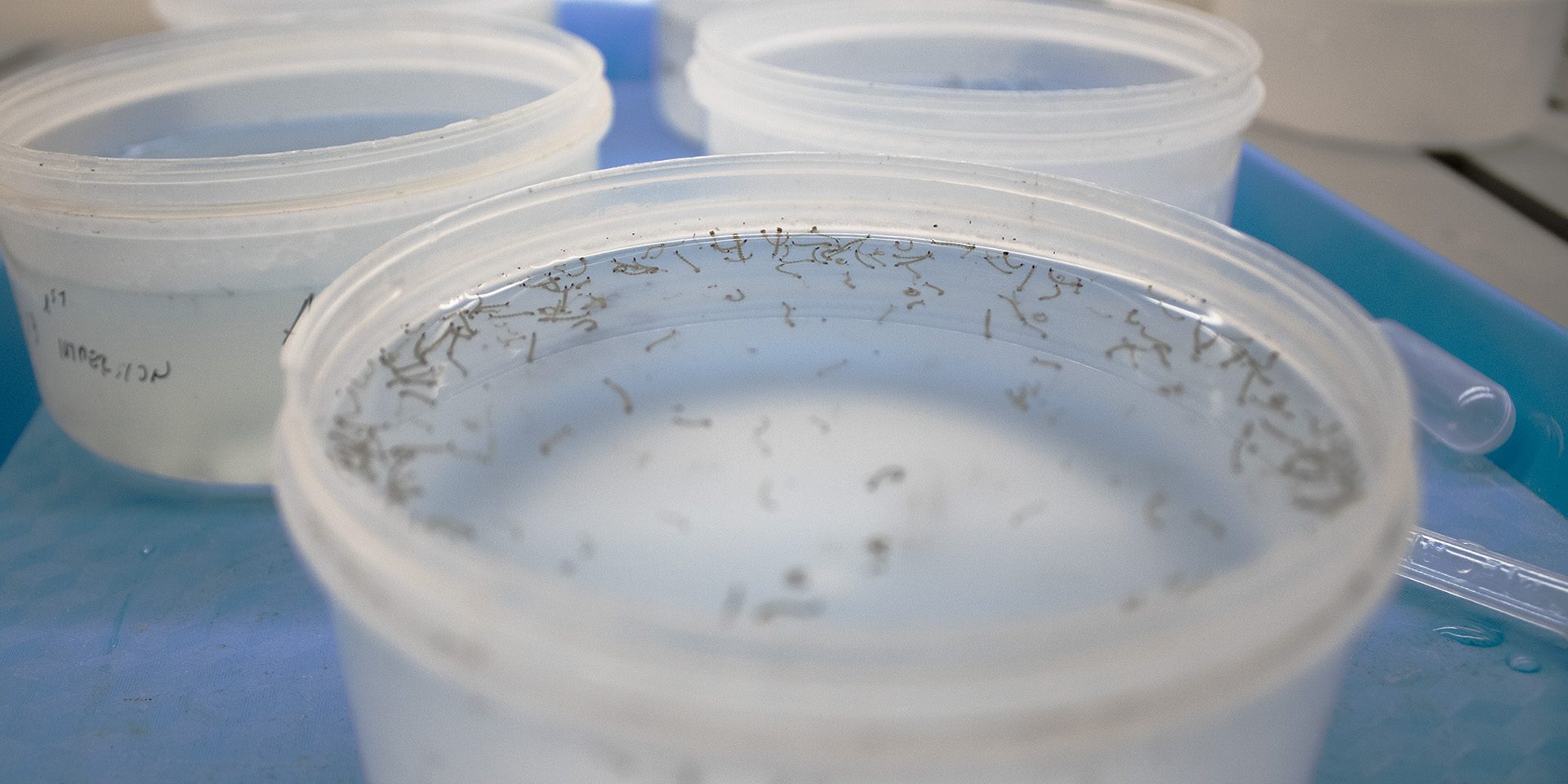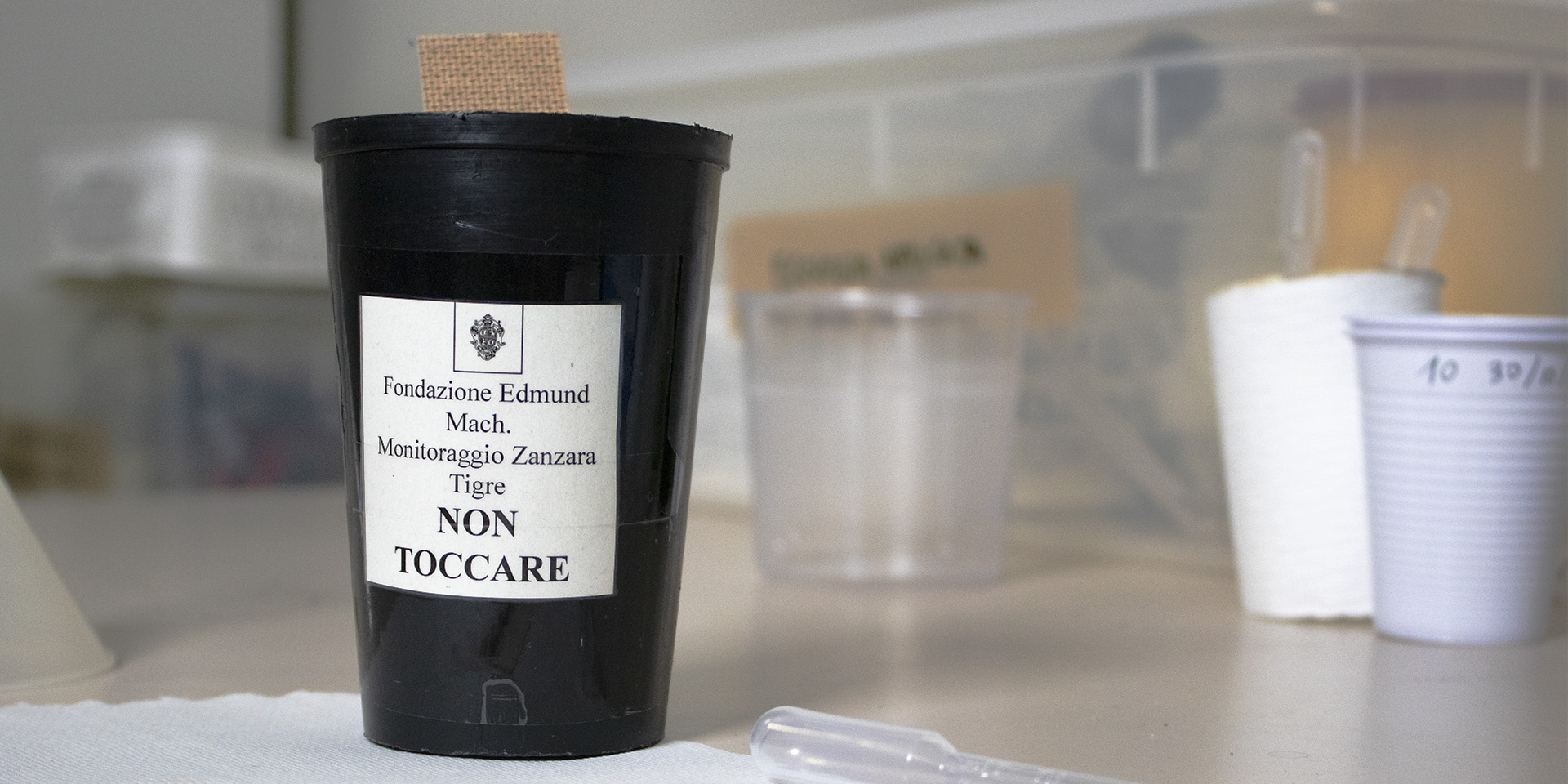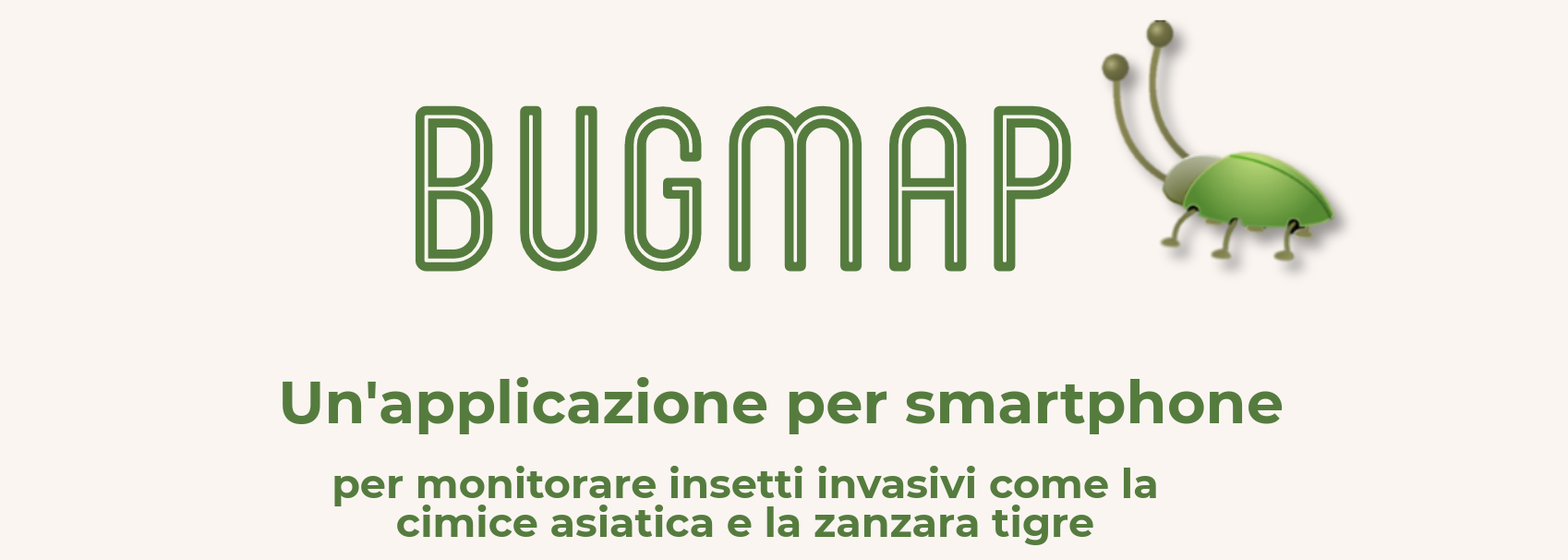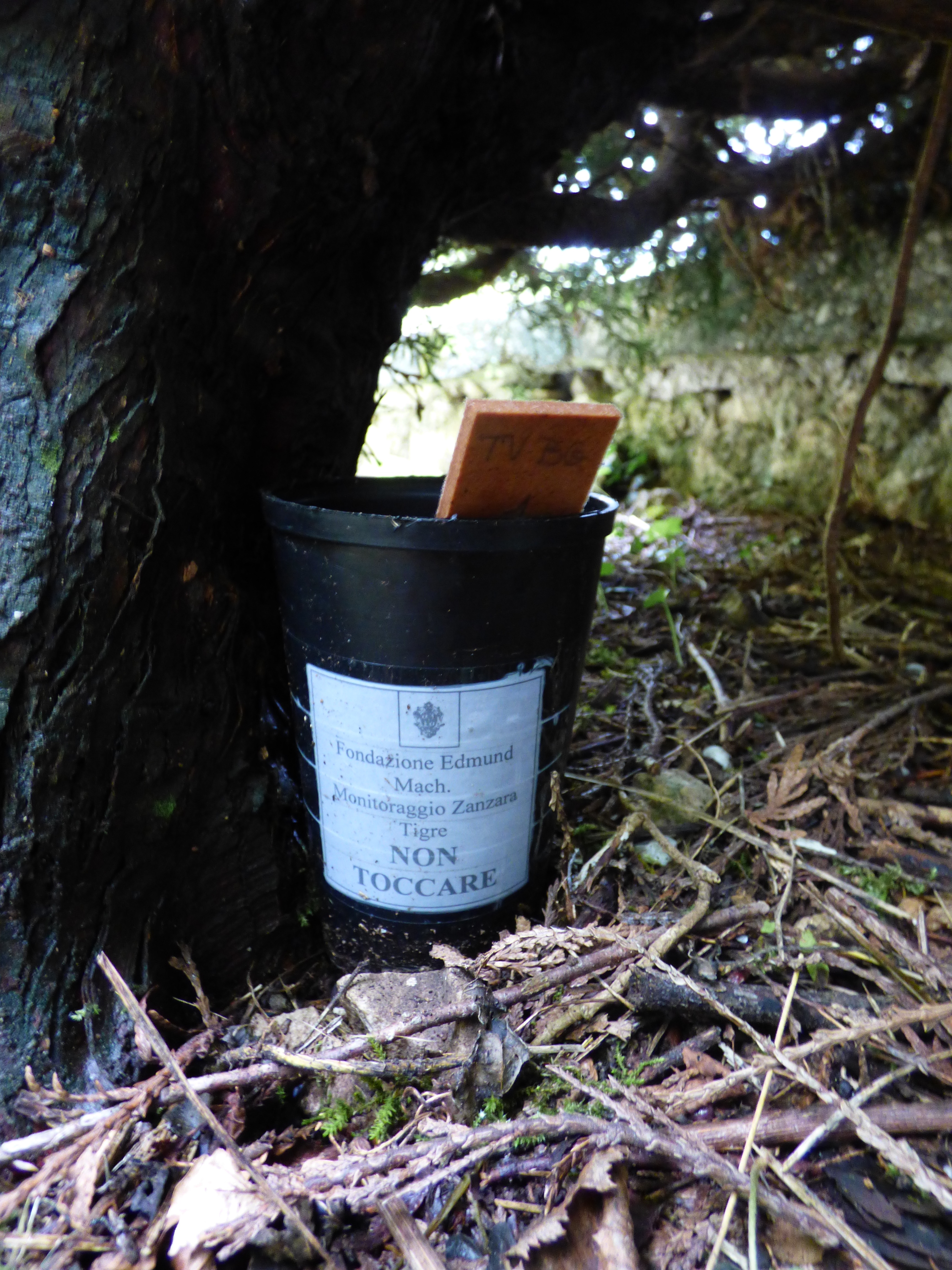What is the Public Administration doing?


The planned programme for monitoring and control of the tiger mosquito and other invasive mosquito species throughout
the provincial region was drafted by the E. Mach Foundation (FEM) and implemented by the Province with Resolution no. 1049 of 15/6/2018.
Contributors to the project are: Provincia Autonoma di Trento, APSS, MUSE – Museo delle Scienze di Trento, FMCR – Fondazione Museo
Civico di Rovereto, Istituto Zooprofilattico Sperimentale delle Venezie, FBK Fondazione Bruno Kessler, Comune di Trento, APPA,
Comunità Alto Garda e Ledro. The programme is supplemented by training activities for physicians and veterinarians, production of
information material for the municipalities, establishment of coordination boards, creation of maps showing distribution of concerned
species based on entomological sampling, and creation of this website.
According to this programme, the provincial region is classified into 4 probability levels of tiger mosquitoes becoming permanently established:
Various monitoring and mosquito containment actions are set up based on this classification.
Larviciding represents a control system that fights mosquitoes in their breeding habitat through anti-larvae insecticides (biocides). Larvicide treatment is necessary in breeding grounds that cannot be eliminated and where water is present continuously. Storm drains and rainwater traps are typical examples. Generally speaking, an adequate infestation control level is not reached by simply treating the culvert in a public area, due to the strong role played by breeding sites in private properties. Currently, larvicide treatments must be carried out with commercial formulations registered by the Health Ministry as Medical-Surgical Devices. Of the active ingredients found in the market, the most reliable are:
According to this programme, the provincial region is classified into 4 probability levels of tiger mosquitoes becoming permanently established:
- Low: urban areas or anthropic environments inside municipal boundaries above 700 metres a.s.l. Or areas inside municipal boundaries with no human presence up to a distance of 200 metres from urban areas and/or with human presence.
- Medium: urban areas or anthropic environments (and neighbouring areas within 200 m) inside municipal boundaries between 600 and 700 metres a.s.l.
- High: urban areas or anthropic environments (and neighbouring areas within 200 m) inside municipal boundaries between 300 and 600 metres a.s.l.
- Very High: urban areas or anthropic environments (and neighbouring areas within 200 m) inside municipal boundaries below 300 metres a.s.l.
Various monitoring and mosquito containment actions are set up based on this classification.
Larviciding represents a control system that fights mosquitoes in their breeding habitat through anti-larvae insecticides (biocides). Larvicide treatment is necessary in breeding grounds that cannot be eliminated and where water is present continuously. Storm drains and rainwater traps are typical examples. Generally speaking, an adequate infestation control level is not reached by simply treating the culvert in a public area, due to the strong role played by breeding sites in private properties. Currently, larvicide treatments must be carried out with commercial formulations registered by the Health Ministry as Medical-Surgical Devices. Of the active ingredients found in the market, the most reliable are:
- Diflubenzuron (a chitin synthesis inhibitor)
- Pyriproxyfen (a juvenile hormone analogue)
- Bacillus thuringiensis var. Israelensis serotype H 14.
What can private individuals do?
Participation of private individuals in monitoring and control activities is essential because managing the public space alone
has been widely shown to be ineffective in the control of tiger mosquitoes by scientific studies as well as on-the-field experiences.
To avoid the nuisance and problems that a high density of tiger mosquitoes bring, all citizens must take the following precautions: prevent
green areas from falling into a state of neglect and prevent standing water; cover and/or treat any source that cannot be removed
(e.g. manholes) with anti-larvae products (possibly organic products used in compliance with the manufacturer’s instructions); coordination
with neighbours will maximise results. Use adulticide treatments only in extreme cases, when mosquito density levels are too high, in order
to avoid releasing harmful substances in the environment and developing resistance in the mosquito population.
bugMap an app for tiger mosquito recognition and activity reporting, is available for smartphones
bugMap an app for tiger mosquito recognition and activity reporting, is available for smartphones

Sampling methods



Different data collection tools and strategies can be used depending on the objective of the sampling. The simplest trap used
in monitoring is the ovitrap. This is a black plastic 250- or 500-cl vessel filled with water. A wood paddle is placed inside, which
serves as a substrate on which the eggs are laid. An oviposition paper strip can be used as an alternative, wrapped around the vessel’s
internal surface. The trap is placed in sheltered and shady areas and it takes advantage of the tiger mosquito's tendency to use small
containers to deposit their eggs just above the surface of the water. The paddles are usually collected weekly or every 15 days. The
seasonal mosquito density dynamics can be estimated from the egg count and number of positive ovitraps. The advantages of this sampling
method include the low cost of the material used and the possibility to apply it mainly in public spaces. In addition, it can be managed
by non-entomologist personnel after a brief training course.
To obtain vector density data or virological data, the most commonly used instruments are the BG-Sentinel® (A) and the CDC light-trap (B). The BG-Sentinel®, designed to capture adult mosquitoes, is a cylinder 40 cm high and 35 cm in diameter. It takes advantage of the preference of adult mosquitoes for black body cavities and also mimics human skin scent to attract them. Its effectiveness can be increased by adding a container of dry ice, which produces carbon dioxide through sublimation. The mosquitoes are collected in a catch bag inside the trap through the suction fan (mains- or battery-powered). The BG-Sentinel® trap should be placed in shady areas, sheltered from wind and rain.
The CDC-light trap consists of a suction system made up of a dry ice container placed above a cylinder which has a top opening to allow the mosquitoes to enter. It has a fan on the opposite side of the cylinder (to push the mosquitoes inside the bottom bag), powered with an electric motor. Dry ice is the attractant, dissipated into CO2 by sublimation. Preferably, it should be placed at a height of 1½ metres. Given the trap’s high cost, it is best to place them in private or limited access areas so they are less prone to vandalism or theft. This type of monitoring is best left to qualified entomologists.
Another method to assess the presence of mosquitoes is that of inspecting possible ideal breeding sites for larvae. In this case, too, it is better to leave the sampling to expert personnel, who inspect possible breeding sites and collect the larvae, if any, manually. Collected larvae are taken to the laboratory for identification or allowed to develop in order to identify the adults.
By the end of 2019, a new project called “Citizen Science” will be launched for citizen engagement in the collection of data on the presence and distribution of tiger mosquitoes (and other mosquito species) throughout Trento’s provincial territory. An app called bugMap will be available soon. This free application will let citizens report the presence of mosquitoes by sending their photographs, a description of the area where encountered, and the location coordinates as automatically calculated by their phone’s GPS. The photographs will be validated by expert personnel from the Edmund Mach Foundation and the data will be used to define a map of tiger mosquito habitats that all app users can view. The same application will serve to report the presence of brown marmorated stink bugs (Halyomorpha halys).
To obtain vector density data or virological data, the most commonly used instruments are the BG-Sentinel® (A) and the CDC light-trap (B). The BG-Sentinel®, designed to capture adult mosquitoes, is a cylinder 40 cm high and 35 cm in diameter. It takes advantage of the preference of adult mosquitoes for black body cavities and also mimics human skin scent to attract them. Its effectiveness can be increased by adding a container of dry ice, which produces carbon dioxide through sublimation. The mosquitoes are collected in a catch bag inside the trap through the suction fan (mains- or battery-powered). The BG-Sentinel® trap should be placed in shady areas, sheltered from wind and rain.
The CDC-light trap consists of a suction system made up of a dry ice container placed above a cylinder which has a top opening to allow the mosquitoes to enter. It has a fan on the opposite side of the cylinder (to push the mosquitoes inside the bottom bag), powered with an electric motor. Dry ice is the attractant, dissipated into CO2 by sublimation. Preferably, it should be placed at a height of 1½ metres. Given the trap’s high cost, it is best to place them in private or limited access areas so they are less prone to vandalism or theft. This type of monitoring is best left to qualified entomologists.
Another method to assess the presence of mosquitoes is that of inspecting possible ideal breeding sites for larvae. In this case, too, it is better to leave the sampling to expert personnel, who inspect possible breeding sites and collect the larvae, if any, manually. Collected larvae are taken to the laboratory for identification or allowed to develop in order to identify the adults.
By the end of 2019, a new project called “Citizen Science” will be launched for citizen engagement in the collection of data on the presence and distribution of tiger mosquitoes (and other mosquito species) throughout Trento’s provincial territory. An app called bugMap will be available soon. This free application will let citizens report the presence of mosquitoes by sending their photographs, a description of the area where encountered, and the location coordinates as automatically calculated by their phone’s GPS. The photographs will be validated by expert personnel from the Edmund Mach Foundation and the data will be used to define a map of tiger mosquito habitats that all app users can view. The same application will serve to report the presence of brown marmorated stink bugs (Halyomorpha halys).


